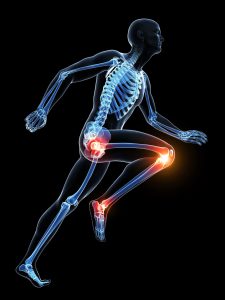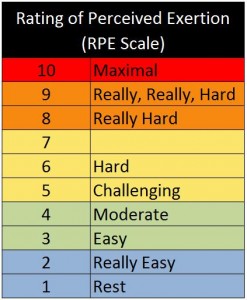Read this! Learn things!
What if bad fat isn’t so bad?
“Ronald Krauss, M.D., won’t say saturated fats are good for you. ‘But,’ he concedes, ‘we don’t have convincing evidence that they’re bad, either.'”
I’ve written here that I’ve been persuaded that not only is fat good for us, that “bad” saturated fat is also at the very least not as bad for us as we’ve been led to believe. I found another article to further support my thoughts. What if fat isn’t so bad? is a 2007 article from NBC News. In it, we get a good dissection of the various flawed studies by which we’ve arrived at the idea that fat–particularly saturated fat–is pure evil.
The article discusses among other things Ancel Keys’s landmark Seven-Countries Study from 1970. This study did more to advance the fat/cholesterol/heart disease link than anything else around. This study went on to frame our current low-fat guidelines. Seems the conclusions that were drawn were quite inaccurate. From the article (emphasis is mine):
“The first scientific indictment of saturated fat came in 1953. That’s the year a physiologist named Ancel Keys, Ph.D., published a highly influential paper titled “Atherosclerosis, a Problem in Newer Public Health.” Keys wrote that while the total death rate in the United States was declining, the number of deaths due to heart disease was steadily climbing. And to explain why, he presented a comparison of fat intake and heart disease mortality in six countries: the United States, Canada, Australia, England, Italy, and Japan.
The Americans ate the most fat and had the greatest number of deaths from heart disease; the Japanese ate the least fat and had the fewest deaths from heart disease. The other countries fell neatly in between. The higher the fat intake, according to national diet surveys, the higher the rate of heart disease. And vice versa. Keys called this correlation a “remarkable relationship” and began to publicly hypothesize that consumption of fat causes heart disease. This became known as the diet-heart hypothesis.
At the time, plenty of scientists were skeptical of Keys’s assertions. One such critic was Jacob Yerushalmy, Ph.D., founder of the biostatistics graduate program at the University of California at Berkeley. In a 1957 paper, Yerushalmy pointed out that while data from the six countries Keys examined seemed to support the diet-heart hypothesis, statistics were actually available for 22 countries. And when all 22 were analyzed, the apparent link between fat consumption and heart disease disappeared. For example, the death rate from heart disease in Finland was 24 times that of Mexico, even though fat-consumption rates in the two nations were similar.”
The large-scale Women’s Health Initiative is discussed:
“We’ve spent billions of our tax dollars trying to prove the diet-heart hypothesis. Yet study after study has failed to provide definitive evidence that saturated-fat intake leads to heart disease. The most recent example is the Women’s Health Initiative, the government’s largest and most expensive ($725 million) diet study yet. The results, published last year, show that a diet low in total fat and saturated fat had no impact in reducing heart-disease and stroke rates in some 20,000 women who had adhered to the regimen for an average of 8 years.”
Several other studies are discussed. The comment from the article on these studies is this:
“These four studies, even though they have serious flaws and are tiny compared with the Women’s Health Initiative, are often cited as definitive proof that saturated fats cause heart disease. Many other more recent trials cast doubt on the diet-heart hypothesis. These studies should be considered in the context of all the other research.”
The article goes on to discuss the subtle differences between the types of LDL or “bad” cholesterol. Seems that all LDLs aren’t created equally:
“But there’s more to this story: In 1980, Dr. Krauss and his colleagues discovered that LDL cholesterol is far from the simple “bad” particle it’s commonly thought to be. It actually comes in a series of different sizes, known as subfractions. Some LDL subfractions are large and fluffy. Others are small and dense. This distinction is important.
A decade ago, Canadian researchers reported that men with the highest number of small, dense LDL subfractions had four times the risk of developing clogged arteries than those with the fewest. Yet they found no such association for the large, fluffy particles. These findings were confirmed in subsequent studies.
Link to heart disease
Now here’s the saturated-fat connection: Dr. Krauss found that when people replace the carbohydrates in their diet with fat — saturated or unsaturated — the number of small, dense LDL particles decreases. This leads to the highly counterintuitive notion that replacing your breakfast cereal with eggs and bacon could actually reduce your risk of heart disease.”
In much of the medical community, this talk of fat being healthy (or at least not un-healthy) is heresy. There seems to be a strong bias against openly discussing evidence to the contrary.:
“Take, for example, a 2004 Harvard University study of older women with heart disease. Researchers found that the more saturated fat these women consumed, the less likely it was their condition would worsen. Lead study author Dariush Mozaffarian, Ph.D., an assistant professor at Harvard’s school of public health, recalls that before the paper was published in the American Journal of Clinical Nutrition, he encountered formidable politics from other journals.
“‘In the nutrition field, it’s very difficult to get something published that goes against established dogma,’ says Mozaffarian. ‘The dogma says that saturated fat is harmful, but that is not based, to me, on unequivocal evidence.’ Mozaffarian says he believes it’s critical that scientists remain open minded. ‘Our finding was surprising to us. And when there’s a discovery that goes against what’s established, it shouldn’t be suppressed but rather disseminated and explored as much as possible.'”
Go here to read the full article.
Injury prevention in runners – “skimpy research”
The smart people at Running-Physio have done a good job of summarizing a research review of studies looking into injury prevention in runners. In all, 32 studies involving 24,066 participants were examined. The relationship between injury and running frequency, volume, intensity and duration were examined. The results? I’ll let the writers tell you;
“Regular followers of RunningPhysio will know of the ongoing debate we have with those staunch supporters of research who insist we must be evidence based. Surely this shows us just how unhelpful research can be in reality – over 30 studies, involving 24,000 runners and no firm conclusions on injury prevention! No wonder Verhangen (2012) described it as “skimpy published research” and went on to conclude,
‘Specifically for novice runners knowledge on the prevention of running injuries is practically non-existent.’
Nielsen et al. isn’t the first review of its kind in this field – a Cochrane Review in 2001 reached a very similar outcome and was updated in 2011 with equally negative conclusions; Yeung, Yeung and Gillepsie (2011) completed a review of 25 studies, including over 30,000 particpants and concluded,
‘Overall, the evidence base for the effectiveness of interventions to reduce soft-tissue injury after intensive running is very weak.’
They go on to make the very wise observation that, “More attention should be paid to changes in training charactisitcs rather than the characteristics themselves.” Based on their reading of the research review, Running-Physio makes the following suggestions:
Novice runners should be especially cautious with increasing volume or intensity of training.
Increase in weekly mileage should be done gradually. The higher the weekly mileage the more caution needs to be applied in increasing this distance. Running expert Hal Higdon talks about runners having a ‘breaking point’ – a weekly mileage above which they start to develop injuries. For every runner this is different but with experience you can find your breaking point and aim to work below it. A gradual increase in mileage helps avoid crossing this point and picking up an injury.
Changes in intensity of training should be added in isolation, rather than combined with increase in distance. Be cautious when adding interval training or hill work and use each training session for its specific goal (i.e.long slow runs at an appropriately slow pace).
Be aware of signs of injury – look out for persistent or severe pain, swelling, restricted movement or sensations of giving way.
Use rest sensibly – don’t be afraid to rest or replace running with cross training when your body needs it.
Seek help – the right GP, Physio or health care professional can make a real difference!
Something I observe here is that we’re often looking for the (training variable) that causes the one thing (an injury). In reality, it’s typically many variables (some of them unseen) that bring on an injury. Also, nowhere in the article or the research is the discussion of running technique. I would think that how someone runs probably has a big effect on whether or not he or she becomes injured. I’ve mentioned previously that where the foot lands in relation to one’s center of mass is quite important as it pertains to impact and running efficiency. I’d be interested in an analysis of the foot placement (and stride length and cadence) in the role of injury.



